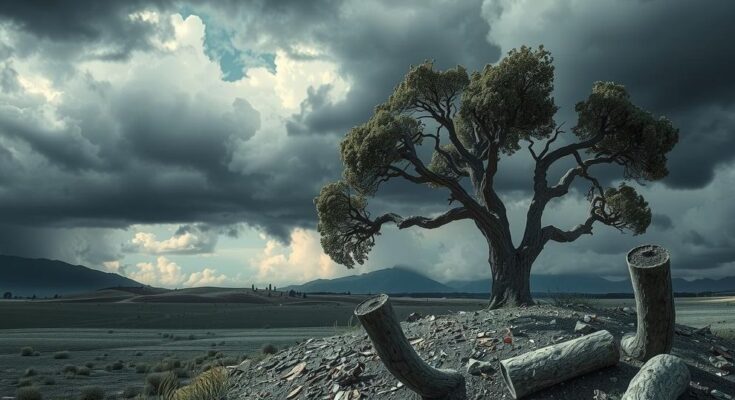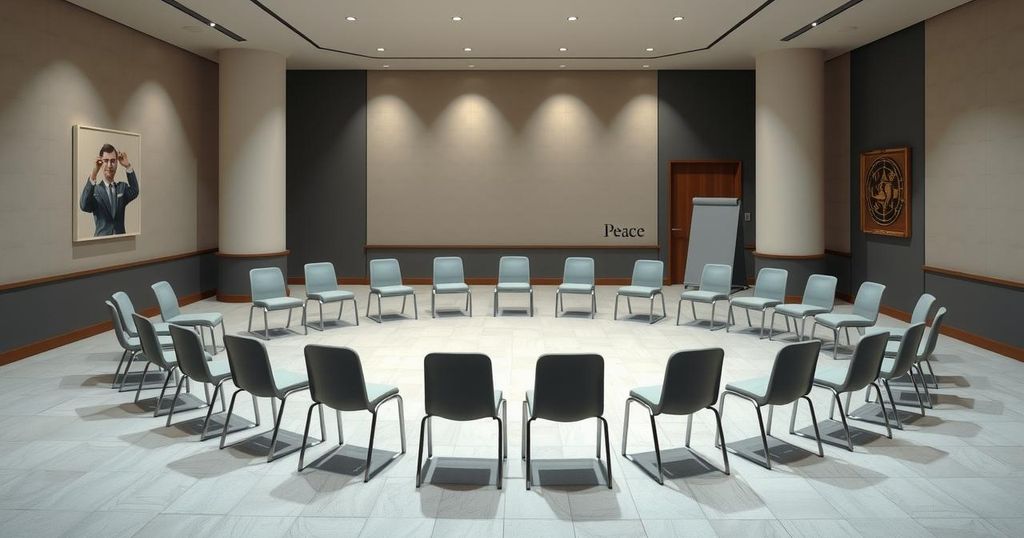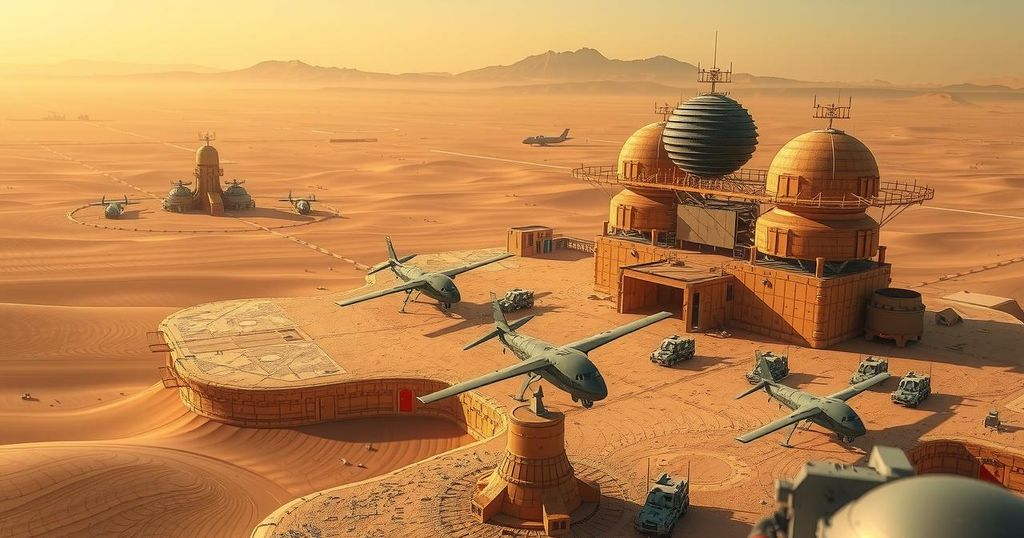The Democratic Republic of Congo is witnessing renewed conflict as rebel forces seize Goma, prompting widespread internal displacement and accusations against Rwanda for supporting insurgents. The fighting, concentrated in eastern provinces, involves over 120 armed groups amidst local, national, and regional tensions. Historical interventions have left a legacy of weak governance that hinders effective responses to the ongoing crisis, which remains largely overlooked on the global stage.
The Democratic Republic of Congo (DRC) is currently experiencing renewed conflict, particularly in the eastern regions, as rebel fighters have seized the city of Goma—an essential humanitarian center. This escalation represents the most severe violence since 2012, resulting in massive internal displacement and raising accusations against Rwanda for its support of the rebels, particularly the M23 group, which is mainly composed of ethnic Tutsis.
The fighting is primarily concentrated in the three eastern provinces—North Kivu, South Kivu, and Ituri—where over 120 armed factions exist. The conflict can be simplified into two main sides: the state forces backed by local militias like FDLR and various Mai-Mai groups, against the M23 rebels and their affiliates, including the ADF, with support from Rwanda. An eleven thousand strong UN peacekeeping mission operates alongside Congolese forces to protect civilians amidst the turmoil.
The recent surge in conflict follows the breakdown of peace talks and an offensive by the M23. The violence is fueled by local identity issues, ethnic tensions, and competition over resources. Nationally, the DRC’s weak governance under President Félix Tshisekedi exacerbates the situation, alongside regional dimensions involving Rwandan interests and interference.
Rwanda’s involvement is significant, as it provides arms and soldiers to the M23. The lingering effects of Rwanda’s 1994 genocide inform its perspective, viewing Hutu militias on Congolese territory as threats. Furthermore, economic gains from mineral smuggling to Rwanda influence its continued support for the conflict. Historically, external interventions, notably by the United States and Belgium, have destabilized the region, leading to a legacy of weak institutions within the DRC.
Civilian experiences remain dire, with millions affected by violence, displacement, and humanitarian crises. The statistics reveal a staggering toll: over six million deaths and millions displaced since the 1990s. Despite the ongoing conflict, many in the capital, Kinshasa, perceive it as distant, thus lacking a sense of urgency, while security forces remain focused on the eastern regions to deter potential instability closer to power.
The global stage largely overlooks the DRC crisis, in contrast to the ongoing war in Ukraine. Factors influencing this disparity include the complex web of Congolese conflicts and the perception of violence as a norm in Africa. Additionally, racial dynamics play a role in the diminished media coverage of African crises compared to those in more geopolitically significant regions.
Furthermore, narratives surrounding conflict minerals often overshadow other critical issues, such as ethnic conflicts and the weak governmental structures. Legislation aimed at regulating conflict minerals can inadvertently harm local economies, further complicating aid efforts. Experts agree that the DRC’s path to peace lies in strengthening its governance and reducing foreign interference, particularly from Rwanda.
In conclusion, establishing lasting peace in the DRC necessitates significant changes within the Congolese government and a reduction in external meddling. The path to stability remains challenging, as the DRC grapples with a history of ineffective leadership and fractured military cohesion. Nevertheless, as recognized, there is hope driven by the resilience of the Congolese people amidst persistent challenges.
The Democratic Republic of Congo has endured ongoing conflict, with deep-rooted issues stemming from historical interventions and weak governance. The eastern provinces, plagued by armed insurgencies and ethnic strife, illustrate the complexities fueling current tensions. International perceptions of the crisis often dismiss its significance compared to other global conflicts, leading to inadequate media coverage and response. This article explores the intricacies of the DRC’s latest violence, the involvement of neighboring Rwanda, and the vital need for local and external reforms to achieve a sustainable resolution.
The DRC’s path to peaceful resolution involves rebuilding its governance structures and addressing the fragmented military landscape. Strengthening the legitimacy of the DRC government is crucial, alongside international efforts to restrict Rwanda’s influence. The grave humanitarian consequences underscore the urgency for comprehensive reform, with hope residing in the resilience of the Congolese populace. Only through genuine commitment to change can the cycles of conflict be broken, paving the way for a stable future.
Original Source: www.cfr.org




